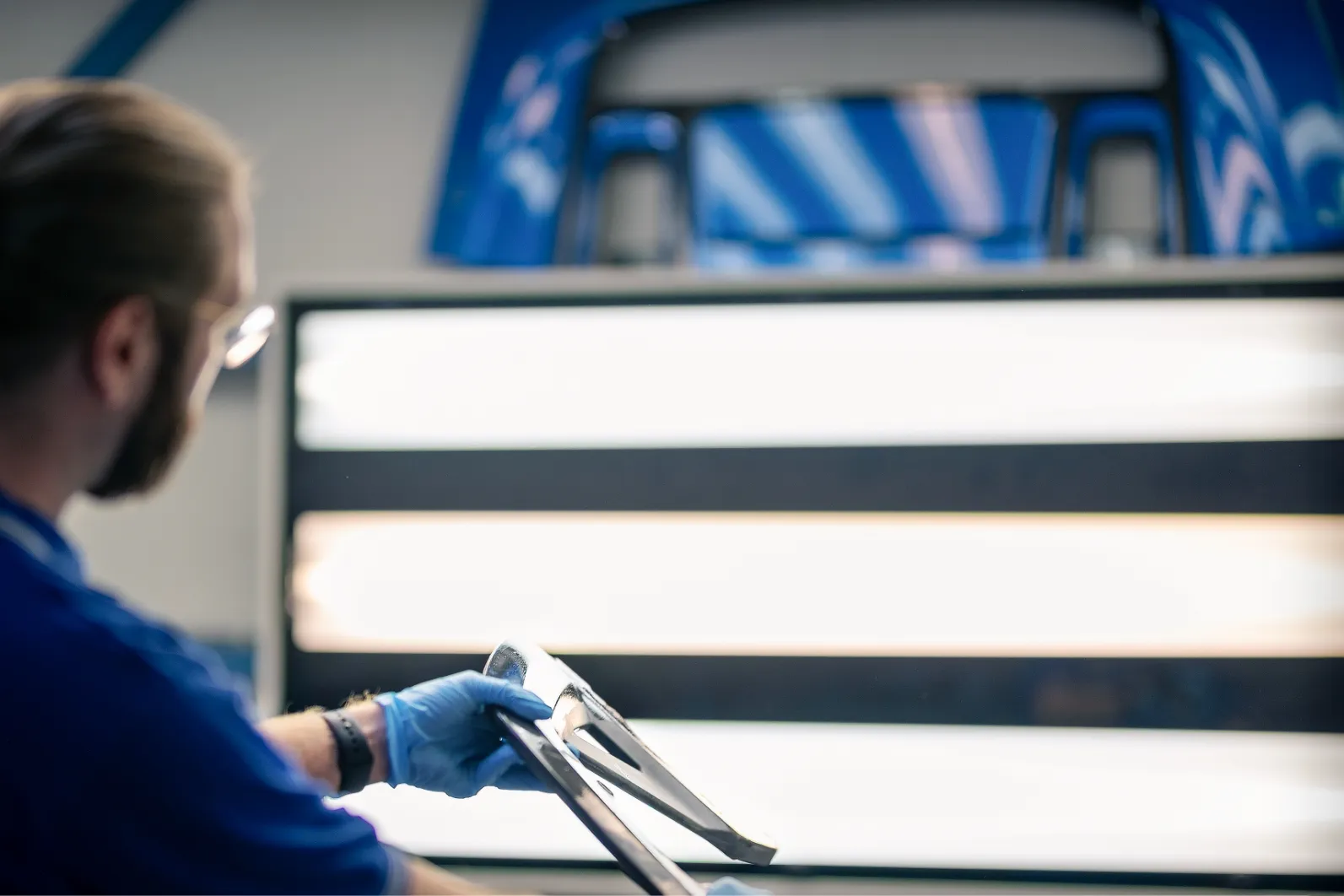
Our Prozess
HOW WE DESIGN HIGH-STRENGTH LIGHTWEIGHT COMPONENTS
Apply and secure 600€ bonus

construction
First, we design the component or part group according to your requirements in CAD (CATIA V5, Siemens NX), ensuring that the design is optimal and compatible with fiber composites.

Layout
Using programs developed specifically for fiber composites, we calculate the static and dynamic properties of your component using the finite element method, optimising function, weight and costs.

PLANT AND TOOL CONSTRUCTION
We design the tools ourselves so that your CFRP parts meet the highest standards. In addition, we even develop some of our preform and RTM systems, including presses, ourselves to implement unique processes and technologies for you.

PROTOTYPING
We have a variety of methods with which we can produce prototypes. As a result, they are quickly available, have the same component layouts as series parts and are cost-effective.

SERIES PRODUCTION
With 30 presses, 3 CNC cutter systems, 5 CNC milling machines, 6 tempering furnaces and the competence to design new systems ourselves, we produce everything from large to small series. We manufacture SMC processes using RTM, wet and prepreg presses and carbon fiber.
Our advantage: RTM
Semi-finished products

First, semi-finished products are cut from fiber mats or embroidered from fibers, or woven.
Laying the semi-finished products

The cut fiber mats are placed on top of each other until they have the desired thickness.
Preforming

Using heat and a binder, the mats are pressed into the three-dimensional shape of the component in a press.
Cut the preform

Excess fiber material at the edge of the preform is trimmed away. The preform is taking shape.
Combining dry preforms

The preform layers are combined together and are now ready for the RTM press
Close the RTM press around the preform

The specially manufactured RTM press now closes tightly around the preform part.
resin injection

Resin is injected into the press together with a catalyst and impregnates, hardens and encloses the mats.
post-processing

The hardened component can be post-processed (sanding, polishing, coating, painting, etc.)
Finished component

The component is now complete. Thanks to the RTM process, it is economical to manufacture, lightweight, stable and has a high surface quality.
Our production

preforms

RTM (RESIN TRANSFER MOLDING)

CNC MACHINING

ADHESIVE MOUNTING

FINISH

QUALITY CONTROL
ACE is also a system-
supplier

Painted soft top box lid
Engine flap
Grill inserts
Visible carbon slats
1
2
3
4
The engine flap and tailgate cover of the Audi R8 Spyder, developed by us as a part system/assembly.
1
Painted soft top box lid
2
Visible carbon slats
3
Grill inserts
4
engine flap
ASSEMBLY, PAINTING, DELIVERY
We don't just produce fiber composite parts:
At ACE, we also offer the assembly of the parts, as well as the combination with other components (e.g. injection-molded and metal parts) and their painting and delivery.
Our production adapts to your concept, with the direct delivery of finished components on a just-in-time basis, in the correct installation order. This gives them time, efficiency, and saves organizational effort.
Our KNOW-HOW:
CFRP REPAIRS
ACE IS AN OFFICIAL CFRP REPAIR PARTNER OF*


*for the Lexus LFA
WE KNOW HOW IT WORKS:
CFRP DAMAGE REPAIR
ACE is one of the few companies in the world that have the necessary know-how to successfully carry out complex repairs on structural carbon parts to a high standard.
CFK
REPAIR TRAINING/WORKSHOP
We share our knowledge: Since carbon is our passion, we offer repair training for CFRP parts, which enables companies all over the world to repair the material.


